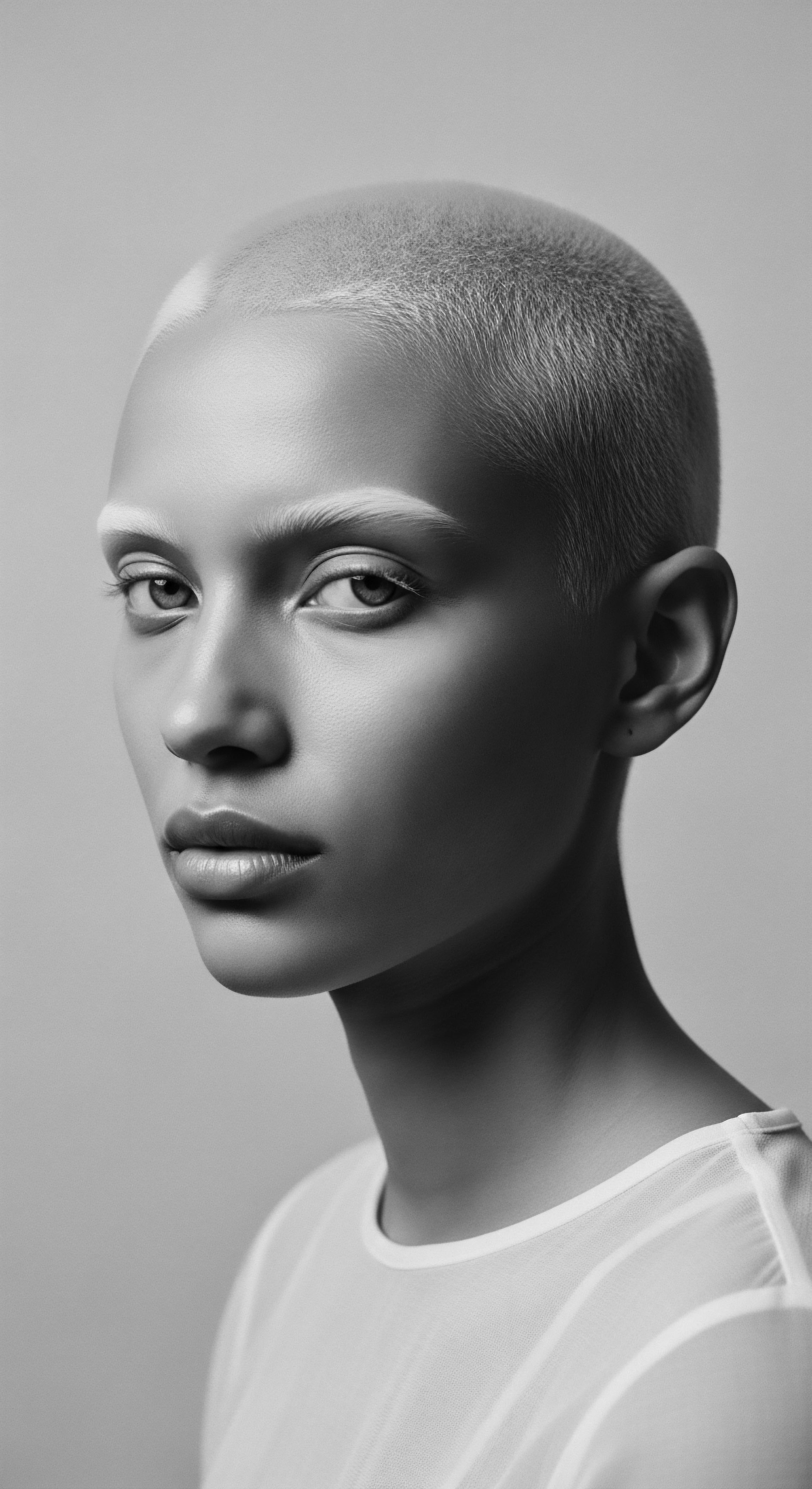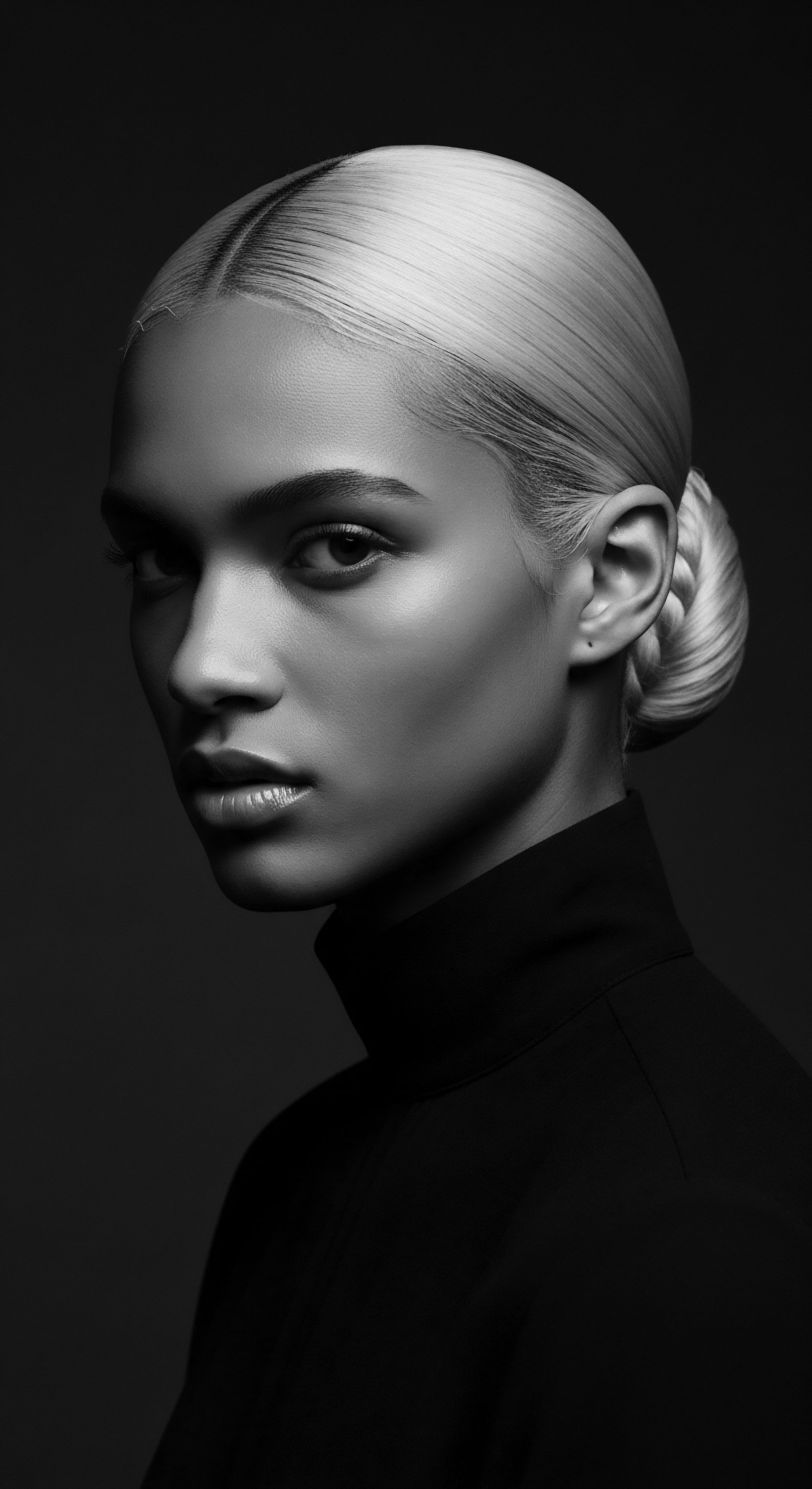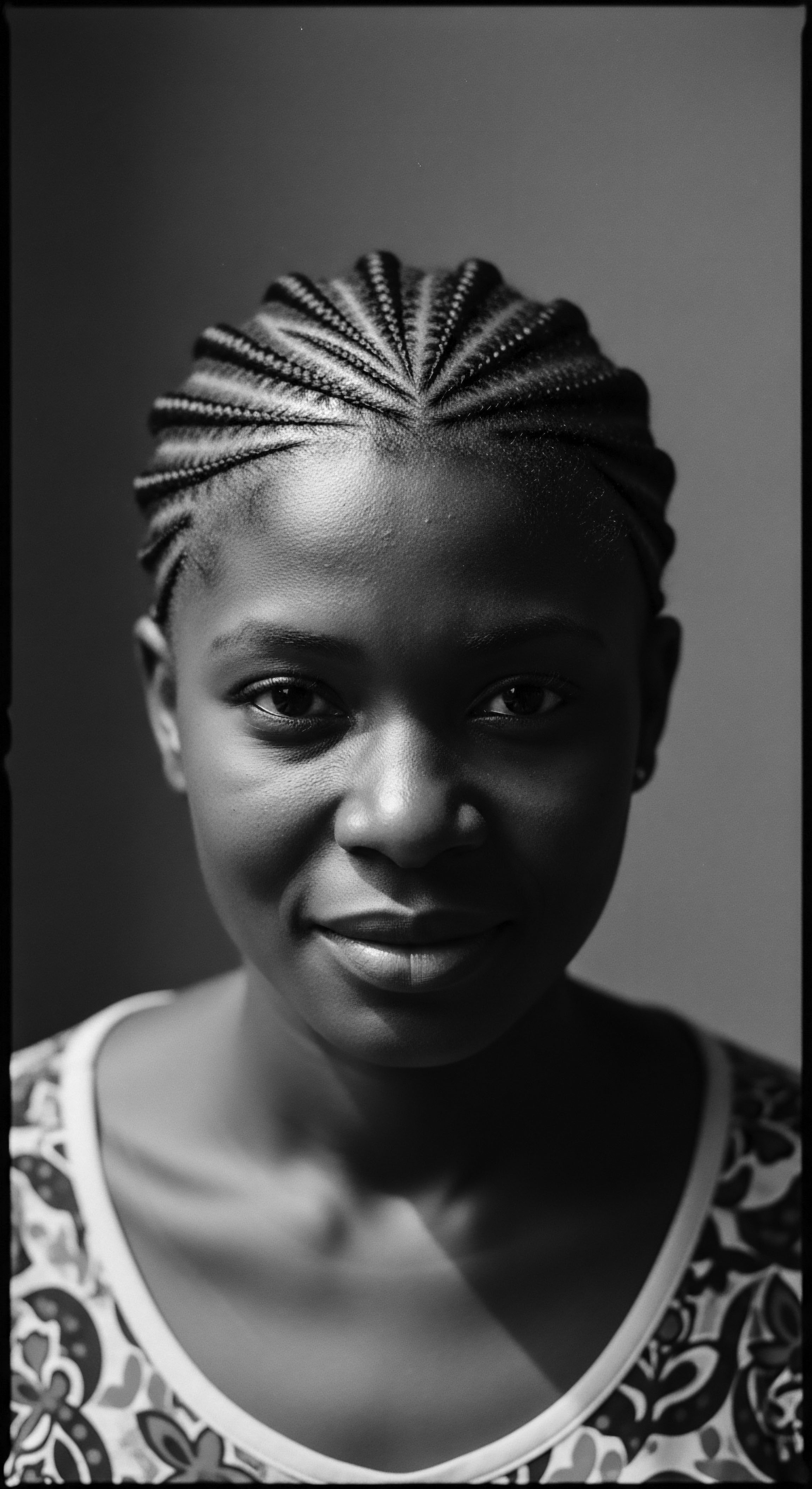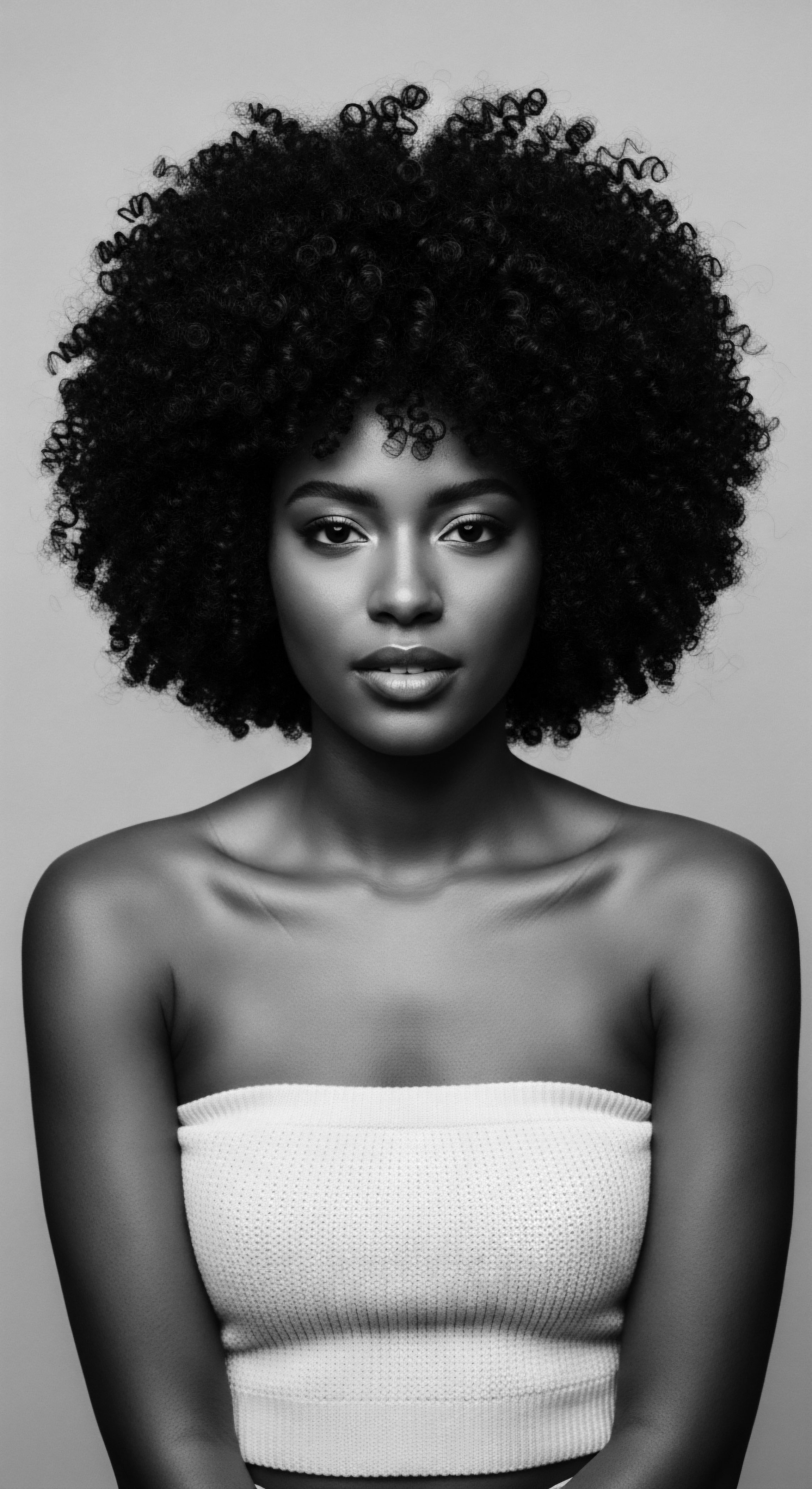
Roots
To truly understand how oils become guardians of moisture within textured coils, one must first listen to the whispers of the past, to the earth-bound rhythms that shaped our hair’s very blueprint. It is a dialogue not just with science, but with the soil beneath our feet and the wisdom passed through generations. We speak of coils not as a deviation, but as a marvel, a testament to ancestral adaptation and a vessel of profound cultural meaning. The strand itself, a spiral wonder, carries within its very structure the memory of climates, of practices, and of a resilience born from rich heritage.

The Sacred Architecture of the Strand
Every textured coil, from the most tightly wound to the gently undulating, possesses an architectural brilliance. Its elliptical shape, unlike the rounder, straighter hair shaft, plays a defining role in how moisture is both received and lost. This inherent structure means the cuticle layers, those tiny, protective scales that lie flat on straight hair, are often raised or lifted at the curves and bends of a coil. This naturally exposes more of the inner cortex to the elements, leading to a quicker egress of precious water.
From an ancestral viewpoint, this observation wasn’t a flaw; it was a characteristic to be understood and honored. Early communities, long before the microscope, recognized hair’s thirst and developed intricate methods to quench it, often using botanicals.

Unraveling the Cuticle’s Dance
The cuticle, the outermost layer of the hair shaft, acts as the primary shield. In textured hair, its non-uniform surface, a consequence of the helical structure, presents a challenge for moisture retention. The raised cuticles allow water to escape more readily, yet they also offer a canvas for product adherence. This intrinsic quality informed ancient care rituals that focused on smoothing and protecting this vital outer layer.
Consider the deep history of hair preparation. In many African societies, hair was not merely adorned; it was a living entity, groomed with intention. The knowledge of how different plant extracts interacted with the hair’s surface was not theoretical, but experiential, passed down through touch and observation.
The elliptical form of textured hair, a signature of its heritage, governs the unique relationship between its cuticular layers and the retention of moisture.

The Ancestral Lexicon of Hair’s Thirst
The language used to describe textured hair and its care holds within it echoes of tradition. While modern science employs terms like “hydrophobic” and “occlusive,” ancestral communities often spoke through action and observation. The notion of “sealing” moisture, for instance, might have been articulated through the ritual of applying a fatty extract that left hair feeling supple and less brittle.
- Sheanut ❉ A widespread botanical, its butter was known across West Africa for its ability to soften hair and protect it from harsh sun and dry winds, acting as a historical occlusive.
- Palm Oil ❉ Revered in many communities, its deep conditioning properties and protective film were utilized in diverse hair preparations.
- Castor Seed ❉ Particularly significant in various African and Caribbean traditions, its viscous oil created a protective barrier, reducing moisture loss.
These ingredients were not simply applied; they were often warmed, mixed with herbs, and massaged into the hair and scalp with ceremonial care, deepening their efficacy. The act of warming oils before application, for example, a common ancestral practice, enhanced their ability to spread evenly and adhere to the hair shaft, mimicking what modern science understands as reducing viscosity for better penetration and coating. This symbiotic relationship between empirical observation and ritual practice forms the bedrock of our understanding.

Ritual
The conscious application of oils to textured coils, a practice deeply rooted in ancestral customs, represents a ritualistic dance between nourishment and preservation. This is where the wisdom of the past, gleaned through generations of tactile knowledge, truly converges with the contemporary scientific explanations of how a moisture barrier is formed. The techniques employed, the tools utilized, and the very intent behind these actions are all interwoven with the heritage of Black and mixed-race hair.

The Tender Thread of Application
Oils, in their purest form or as part of a balm, do not introduce moisture into the hair shaft. Rather, their profound influence lies in their capacity to hold existing hydration within the coil. They achieve this by forming a delicate yet powerful film along the hair strand.
This film, comprised of lipid molecules, acts as a hydrophobic (water-repelling) layer, slowing the rate at which water molecules evaporate from the hair’s surface. Think of it as a finely spun, invisible cloak, protecting the precious moisture that has already been absorbed by the hair from humectant ingredients or direct water application.
Historically, the application of oils was often part of a broader “LOC” or “LCO” method, even if not explicitly termed as such. The “L” (liquid) would involve water or a water-based concoction, followed by an “O” (oil) or “C” (cream/conditioner), and then often another oil for sealing. This layering ensured the hair was first saturated with water, then the oil was applied to trap that hydration.

How do Lipids Create a Moisture Barrier?
Lipids, the fundamental components of oils, possess a molecular structure that allows them to spread across the hair shaft. When applied, these lipid molecules align themselves, creating a continuous, water-resistant barrier. This barrier physically impedes the passage of water vapor from the hair into the surrounding atmosphere, effectively reducing transepidermal water loss from the hair.
The efficacy of an oil in sealing moisture is largely dependent on its molecular weight and the composition of its fatty acids. Oils rich in saturated fatty acids, like coconut oil or shea butter, tend to form a more substantial occlusive layer compared to lighter oils.
Consider the historical methods of creating these oil formulations. Indigenous communities would often press oils from seeds and nuts, sometimes infusing them with herbs or botanicals known for their protective properties. These traditional preparations, often painstakingly made, understood the power of lipid barriers long before the advent of chemical analysis.

From Adornment to Preservation
The use of oils in styling practices, particularly protective styles, provides a direct line to ancestral wisdom. Styles like braids, twists, and cornrows, which have served as cultural markers, social identifiers, and practical solutions across African and diasporic communities for millennia, were often prepared with oils. The oil not only smoothed the hair for easier manipulation but also provided a protective sheath against environmental stressors.
| Historical Practice Braiding in West Africa |
| Oil Application & Purpose Pre-braiding, oils like Kukui nut oil or Argan oil would be massaged into hair, improving pliability and reducing friction during the styling process. This created a lasting protective layer for the weeks or months the style was kept. |
| Historical Practice Twisting in Caribbean Cultures |
| Oil Application & Purpose After washing, a blend containing Jamaican Black Castor Oil might be applied. This helped to define the coil pattern and then seal moisture into the twists, preventing dryness and breakage. |
| Historical Practice Coil Creation in Southern Africa |
| Oil Application & Purpose Natural oils such as Marula oil were used to prepare hair for traditional coil formations, allowing the hair to be shaped while simultaneously coating the strands for environmental protection. |
| Historical Practice These practices underscore the ancient understanding of oils as essential components for both aesthetics and the physical integrity of textured hair, ensuring its longevity and vitality. |
The concept of heat styling, while seemingly modern, also has ancestral parallels. Sun-drying hair after oil application, or even using heated stones carefully, would have helped distribute the oil evenly and create a smooth, sealed surface. The inherent understanding was always about working with the hair’s nature, not against it.
The historical use of oils in protective styling demonstrates a deep, inherited wisdom regarding their ability to preserve hair’s moisture and integrity.

Relay
The continuous journey of textured hair care, from ancient homesteads to modern laboratories, reveals a profound continuity in the understanding of how oils interact with coils to seal moisture. This understanding is not a new discovery; it is a relay of knowledge, passed from hand to hand, generation to generation, with contemporary science providing deeper articulation of principles long observed. The fundamental mechanisms, whether described through the lens of lipid chemistry or ancestral wisdom, speak a shared language of protection and preservation for hair’s inherent hydration.

The Science of Sealing
At its core, the ability of oils to seal moisture lies in their occlusive properties. Occlusive agents form a physical barrier on the surface of the hair shaft, reducing the rate of water evaporation. This is especially vital for textured coils, which, due to their unique structural formation and the raised cuticle scales at their bends, are more susceptible to moisture loss. The efficacy of different oils in this role varies based on their fatty acid composition, molecular weight, and viscosity.

Which Oils are Most Effective at Moisture Retention?
Oils with higher concentrations of long-chain fatty acids, often saturated or monounsaturated, tend to create a more substantial occlusive layer. These include oils like Castor Oil, with its rich ricinoleic acid content, forming a thick, protective film. Coconut Oil, largely composed of lauric acid, can penetrate the hair shaft but also leaves a significant surface film, reducing protein loss and acting as an occlusive.
Jojoba Oil, structurally similar to the hair’s natural sebum, provides a balanced seal without excessive greasiness. The choice of oil, then, is often a matter of balance between occlusive power and aesthetic feel, a balance intuitvely sought by ancestral users.
- Castor Oil ❉ Its high viscosity creates a robust film, making it an excellent occlusive for thick, coily textures.
- Coconut Oil ❉ Though it can penetrate, its solidifying nature at cooler temperatures also provides a good surface seal.
- Shea Butter ❉ A rich emollient, it forms a protective, lasting barrier on the hair, particularly beneficial for very dry textures.
The science now confirms what traditional practices long held ❉ layering is key. A common practice in many African diasporic communities involves applying a water-based leave-in or mist, followed by an oil, and sometimes a cream. This layered approach ensures that moisture is first introduced (by the water-based product) and then effectively locked in (by the oil and cream), maximizing the hair’s hydration.

Historical Data and the Legacy of Lipid Use
One compelling historical example of understanding and utilizing the sealing properties of oils comes from the Himba people of Namibia. For centuries, Himba women have applied a paste called ‘Otjize’ to their skin and hair. Otjize is a mixture of ochre powder, butterfat (from cows), and sometimes aromatic resins. This deep red paste is meticulously applied to their characteristic long, braided hair, which is often styled into intricate dreadlocks or coils.
The butterfat in Otjize, a natural lipid, serves a dual purpose ❉ it acts as a cleansing agent, dissolving dirt and impurities, but perhaps more critically, it forms a highly effective occlusive barrier against the harsh desert climate. This practice not only provides protection from sun and dryness, preventing moisture evaporation from the hair shaft, but it also imparts a distinct red hue, serving as a powerful cultural identifier and symbol of beauty and status within their community (Crabtree, 2017). This traditional application of a fatty substance directly illustrates the ancestral recognition of lipids’ ability to seal moisture and protect textured hair from environmental stressors, a practice that predates modern scientific explanation by centuries.
The Himba’s use of Otjize exemplifies a profound, ancestral understanding of oils’ occlusive power in safeguarding textured hair from environmental desiccation.
This specific historical account highlights a practice where the intuitive application of lipids for protection and preservation was deeply embedded in daily life and cultural expression, showing a sophisticated, empirical knowledge of hair health that aligns remarkably with contemporary scientific principles of moisture sealing. The generational continuity of such rituals underscores the authoritative nature of this inherited wisdom.
The interplay between external conditions and hair health was certainly observed across diverse cultures. In humid environments, less occlusive oils might have been preferred to avoid product buildup, while in arid regions, heavier, more sealing oils would have been chosen to combat dryness. This adaptive approach, refined over countless generations, forms the core of hair heritage.
| Ancestral Observation/Practice Applying fatty substances (butters, animal fats) to hair in dry climates. |
| Modern Scientific Principle Occlusion ❉ Lipids form a hydrophobic layer, reducing transepidermal water loss from the hair. |
| Ancestral Observation/Practice Layering water-based concoctions with oils and heavier balms. |
| Modern Scientific Principle LOC/LCO Method ❉ Sequential application of liquid, oil, and cream to introduce and then trap moisture effectively. |
| Ancestral Observation/Practice Massaging oils into the scalp and hair before braiding or twisting. |
| Modern Scientific Principle Lubrication & Conditioning ❉ Oils reduce friction, minimize breakage during manipulation, and improve hair's manageability while providing a surface seal. |
| Ancestral Observation/Practice The enduring success of traditional hair care practices lies in their empirical alignment with fundamental scientific principles of hair biology. |
The journey from observation to formalized knowledge is a testament to the ingenuity of our forebears. They understood the power of oils to protect and seal, a truth now illuminated by the precise language of chemistry. This continuity, this relay of wisdom, empowers us to approach textured hair care not as a novel pursuit, but as a continuation of a profound and effective heritage.

Reflection
The story of oils sealing moisture in textured coils is more than a technical explanation; it is a living document, a testament to the enduring wisdom held within the soul of a strand. This deep understanding, inherited through generations, continues to guide our hands and hearts as we tend to our crowns. Our coils, so often misunderstood by a world that once sought to straighten their very spirit, stand as resilient archives, preserving practices born from necessity, artistry, and an intimate kinship with the natural world.
The act of oiling hair connects us to those who came before, to the hands that pressed precious seeds, to the minds that observed hair’s needs under relentless sun and wind. It speaks of community, of bonding over shared rituals, of mothers teaching daughters a language of touch and care that transcends mere words. This heritage is not static; it lives, breathes, and evolves, incorporating new knowledge while remaining rooted in its foundational truths.
As we choose our oils today, understanding their lipid structures and occlusive powers, we are not abandoning the past. We are, instead, enriching it, adding new verses to a song centuries old, a song of reverence for textured hair and its boundless beauty.

References
- Crabtree, C. (2017). Hair in African Societies. In A. B. Smith (Ed.), Encyclopedia of African Cultural Heritage. ABC-CLIO.
- Robbins, C. R. (2012). Chemical and Physical Behavior of Human Hair (5th ed.). Springer.
- Gavazzoni, M. F. & Quatresooz, P. (2014). Ethnic Hair. In P. Boulogne & A. D. L’Her (Eds.), The Science of Hair Care (pp. 51-78). CRC Press.
- Khumalo, N. P. & Gumedze, F. N. (2018). Hair and Scalp Diseases ❉ A Practical Guide to Diagnosis and Treatment. Wiley Blackwell.
- Anwar, F. et al. (2016). Vegetable Oils in Food Technology ❉ Composition, Properties, and Uses. CRC Press.
